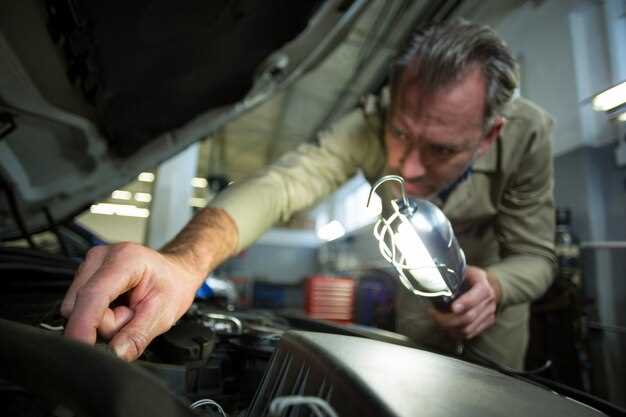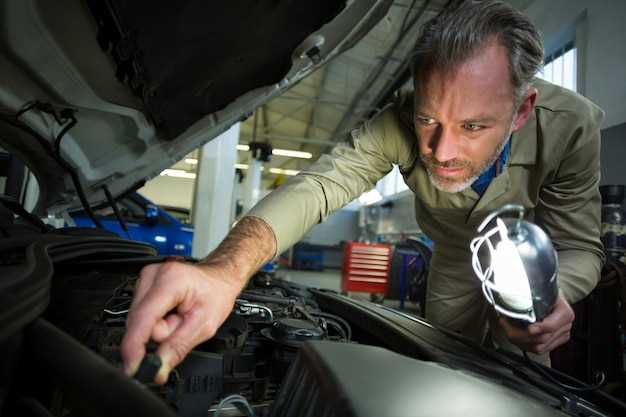
The world of muscle cars is a captivating blend of history, power, and passion. Restoring a muscle car is not just about bringing an old vehicle back to life; it’s about enhancing its performance, embodying the spirit of a bygone era, and rekindling the love for raw automotive power. This guide serves as a comprehensive resource for enthusiasts who aspire to elevate their classic muscle cars to peak performance while respecting their authentic roots.
In this guide, you will explore essential steps that encompass engine rebuilding, suspension upgrades, and brake enhancements, all tailored to maximize your car’s potential. Each section is designed to provide you with invaluable insights, practical tips, and expert recommendations, ensuring that your restoration project not only meets your expectations but exceeds them. Whether you are a seasoned mechanic or a passionate novice, understanding these techniques will help you achieve a muscle car that performs as good as it looks.
The journey of restoration is both challenging and rewarding. It requires patience, attention to detail, and a commitment to quality craftsmanship. By prioritizing optimal performance in your restoration process, not only will you create a vehicle that turns heads on the road, but you will also ensure that it operates at its best for years to come. Prepare to unleash the power within your muscle car as we delve into the specifics of restoration and performance enhancement.
Assessing the Current Condition of Your Muscle Car

Before diving into the restoration process of your muscle car, it is imperative to conduct a thorough assessment of its current condition. This evaluation will guide your restoration efforts, helping you prioritize repairs and upgrades effectively.
Begin by examining the exterior for signs of rust, dents, or paint damage. Look closely at the body panels, including the fenders, hood, and door edges. Rust can compromise structural integrity, so identify any areas where corrosion is present. Note the condition of the glass, including windows and mirrors, for any cracks or chips that may require replacement.
Next, inspect the interior. Check the upholstery for tears, stains, or fading. Evaluate the condition of the dashboard, steering wheel, and console components. Functional elements such as the radio, air conditioning, and lighting should be tested, as replacing or repairing these can impact your budget significantly.
Once the visual inspections are complete, shift your focus to the engine and mechanical systems. Open the hood and check for leaks, worn belts, and hoses. Assess fluid levels, including oil, coolant, and transmission fluid. A comprehensive evaluation of the engine’s condition may require a compression test or diagnostics on electronic components, which will provide additional insights into performance issues.
Don’t overlook the suspension and braking systems. Inspect the brakes for wear on pads and rotors, and check for any leaks in the brake lines. The suspension should be evaluated for any signs of wear, such as broken springs or damaged shock absorbers. A stable suspension is critical not only for safety but also for achieving optimal performance on the road.
Lastly, take the time to assess the tires. Check tread depth, sidewall integrity, and tire pressure. Tires play a crucial role in handling and performance, so ensure they are suitable for your driving needs.
Document all findings in detail. This record will not only assist in planning your restoration projects but also serve as a reference to track progress and improvements. A comprehensive assessment of your muscle car lays the foundation for a successful restoration journey, ensuring that each aspect is addressed to bring your vehicle back to its prime performance state.
Upgrading Key Components for Enhanced Performance

To achieve optimal performance in your muscle car, upgrading key components is essential. Each part plays a significant role in enhancing power, efficiency, and overall driving experience. Below are crucial components to consider when planning your upgrades.
Engine Upgrades: The heart of your muscle car, the engine, significantly influences performance. Consider installing a high-performance intake manifold, which improves airflow to the engine. Additionally, upgrading to a performance camshaft can enhance the engine’s output by optimizing combustion timing. Don’t forget to invest in a quality exhaust system to reduce back pressure and improve exhaust flow.
Suspension Enhancements: Upgrading your suspension system is vital for better handling and stability. Consider installing aftermarket shocks and struts that provide improved damping. Coilover kits can also allow for ride height adjustments and enhance cornering capabilities. Stiffer anti-roll bars can mitigate body roll during aggressive turns, ensuring a more responsive driving experience.
Braking System Improvements: Effective braking is crucial for a performance vehicle. Upgrading to larger brake rotors and high-quality performance brake pads can significantly improve stopping power. Consider adding stainless steel brake lines as they offer better braking response and reduce the risk of line expansion under pressure.
Transmission Modifications: The transmission is vital for transferring power to the wheels efficiently. A high-performance torque converter can enhance acceleration and throttle responsiveness. If equipped with an automatic transmission, consider a transmission cooler to maintain optimal operating temperatures during spirited driving.
Tire Upgrades: Quality tires are essential for maximizing road grip and traction. Invest in high-performance tires that suit your driving style–whether for street use or track applications. Ensure the tires are properly matched to your wheel size and suspension setup for optimal performance.
Fuel System Enhancements: To support an upgraded engine, the fuel system may require enhancement. Upgrading the fuel pump and injectors ensures adequate fuel delivery, especially in high-performance situations. Consider installing a fuel pressure regulator to maintain consistent fuel pressure, optimizing engine performance.
In summary, upgrading key components such as the engine, suspension, braking system, transmission, tires, and fuel system is essential for enhancing the overall performance of your muscle car. Each upgrade contributes to improved handling, power, and driving enjoyment, allowing you to restore your classic vehicle to its full potential.
Tuning and Maintenance Tips for Peak Performance
To achieve peak performance from your muscle car, regular tuning and maintenance are essential. Start by conducting a thorough inspection of the engine. Ensure that all the components, including spark plugs, ignition timing, and fuel injectors, are functioning optimally. Replacing worn-out spark plugs can significantly improve combustion efficiency, leading to better horsepower and fuel economy.
Next, pay attention to your car’s fuel system. Use high-quality fuel and consider adding a fuel injector cleaner periodically to maintain clean injectors. Clogged injectors can hinder performance by disrupting the fuel spray pattern, leading to inefficient combustion.
Regularly check and replace the air filter. A clean air filter allows for better airflow into the engine, enhancing its performance. Additionally, consider upgrading to a high-performance air intake system for improved airflow and increased engine response.
Focus on your vehicle’s exhaust system as well. Upgrading to a performance exhaust can reduce back pressure and improve engine efficiency. This not only boosts horsepower but also gives your muscle car a more aggressive sound.
Don’t overlook the importance of proper lubrication. Regular oil changes with the right type of oil can make a significant difference in engine longevity and performance. Check other fluids such as coolant, brake fluid, and transmission fluid to ensure they are at optimal levels and in good condition.
Tire maintenance is another critical aspect of performance. Keep tires properly inflated and check for uneven wear, as this can affect handling and traction. Consider upgrading to performance tires for enhanced grip and stability on the road.
Finally, maintain your braking system. High-performance brake pads and rotors can vastly improve stopping power. Ensure that your brake fluid is fresh and at the correct level to maintain optimal braking performance.
By consistently following these tuning and maintenance tips, you can ensure that your muscle car remains in peak condition, ready to deliver the power and performance you desire.
